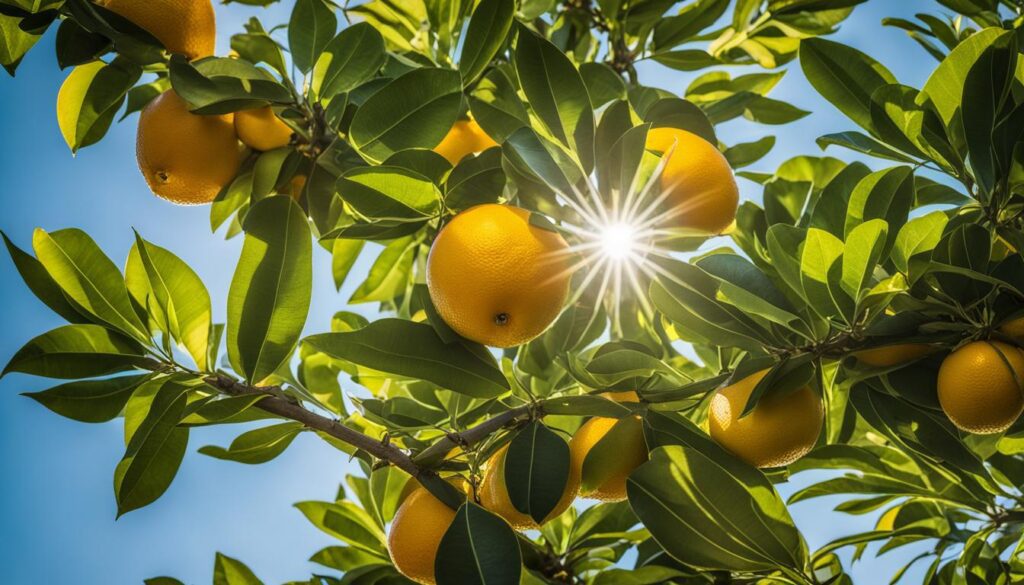Welcome to the world of Meyer Lemon Trees, where beauty and deliciousness collide. If you’ve ever dreamed of having your own little citrus oasis, filled with vibrant blooms and the promise of juicy lemons, then you’re in the right place. In this article, we will delve into the secrets of flowers on lemon trees and share essential citrus tree care tips to help you create an abundant and thriving citrus garden.
Unlocking the blooming potential of your lemon tree is a fascinating journey. Meyer Lemon Trees, known for their sweeter and juicier fruit, require specific care to ensure optimal blooming. From providing the right amount of light to maintaining proper watering and nutrient balance, every step counts. We will guide you through the process, offering expert advice on pollination, pruning, and more.
So, if you’re ready to embark on a citrus-filled adventure and discover the joy of watching your lemon tree flourish, grab a cup of tea and get ready to dive into the world of blooming citrus. With our top tips and secrets, you’ll soon be surrounded by the sweet aroma of flowers on your very own lemon tree.
Stay tuned for the upcoming sections, where we’ll delve into providing the right conditions for blooming, pollination and pruning tips, and the key to successfully growing Meyer Lemon Trees. Exciting times await as you unlock the secrets of blooming citrus and become a citrus care superstar!
Providing the Right Conditions for Blooming
To encourage blooming in your Meyer Lemon Tree, it’s important to create the right environment. Here are some key factors to consider:
Light Requirements
Meyer Lemon Trees require at least 6 hours of direct sunlight each day to thrive and produce blooms. Placing the tree near a south-facing window or in a sunny spot in your garden will ensure it receives the necessary light. This abundant sunlight provides the energy the tree needs to develop healthy foliage and flowers.
Watering
Proper watering is crucial for the health and blooming of Meyer Lemon Trees. It’s important to keep the soil consistently moist but not overly saturated. To determine when it’s time to water, check the moisture level in the top two inches of soil. If it feels dry, it’s time to water. Avoid overwatering, as this can lead to root rot. Regularly check the soil moisture and adjust your watering schedule accordingly.
Providing Nutrients
Citrus planting mix is essential for providing the right nutrients to your Meyer Lemon Tree. Use this mix during potting or planting to ensure the tree has access to the necessary minerals and organic matter. Additionally, fertilizing your tree three to four times a year with citrus tree fertilizer will help support healthy growth and blooming. The specific nutrient requirements may vary, so follow the instructions on the fertilizer packaging.
Temperature Tolerance
Meyer Lemon Trees are known for their cold hardiness, but they do have limits. If temperatures drop below 20 degrees Fahrenheit, it’s crucial to bring your tree indoors to protect it from frost damage. However, be cautious of winter heat indoors, as it can dry out the tree. To combat this, mist the leaves daily to maintain humidity levels.
As temperatures warm up, gradually acclimate your tree to outdoor conditions. This process will help prevent shock and allow the tree to adjust to the changing weather.
By providing the right conditions for your Meyer Lemon Tree, including adequate light, proper watering, nutrient supply, and temperature control, you can promote healthy blooming and maximize the fruit production of your tree.
Pollination and Pruning Tips
Meyer Lemon Trees are self-pollinating, but having multiple trees can increase pollination and lead to larger harvests. If your tree is indoors, you can manually pollinate the blooms using a small, dry paintbrush. Simply transfer pollen from one flower to another by gently brushing the inside of each bloom. This process simulates the role of bees in natural pollination and helps ensure a higher fruit set.
Pruning is essential for maintaining the health and productivity of your Meyer Lemon Tree. By removing certain branches, you can shape the tree, improve airflow, and allow sunlight to reach all parts of the tree, promoting healthy growth and abundant fruit production. Here are some pruning tips:
- Remove upward-growing branches: These branches can disrupt the natural shape of the tree and limit the sunlight reaching the lower branches. Prune them close to the main trunk or parent branch.
- Remove damaged or crossing branches: These branches can potentially spread diseases and create obstructions. Cut them back to healthy wood or remove them entirely.
- Clear the tree’s center: Branches that block sunlight from reaching the center of the tree can hinder fruit production. Trim them to open up the canopy, allowing sunlight to penetrate evenly.
Prune your Meyer Lemon Tree in early fall or early spring to minimize stress on the tree and promote new growth. When making cuts, angle them slightly upwards to prevent water accumulation and encourage proper healing. Remember to disinfect your pruning tools before and after each cut to prevent the spread of diseases.
Pro Tip: To prevent fruit overbearing, it’s beneficial to remove a few lemons in large clusters when they reach pea-sized. This allows the remaining fruit to grow larger, resulting in a higher-quality harvest. Choose the strongest and healthiest-looking lemons to keep on the tree.
By properly pollinating and pruning your Meyer Lemon Tree, you can maximize its yield and maintain its overall health. The result will be a thriving citrus tree that not only enhances the aesthetic appeal of your garden but also provides you with an abundance of fresh, tangy lemons to enjoy.
Conclusion
Growing Meyer Lemon Trees can be a truly fulfilling endeavor, especially when you provide the optimal conditions for blooming and fruit production. By ensuring your tree receives adequate sunlight, appropriate watering, and the necessary supply of nutrients, you can successfully optimize its growth and overall productivity. It’s also essential to maintain proper temperature control and practice efficient pollination and pruning techniques.
Remember, caring for your Meyer Lemon Tree requires patience, as it takes time for the lemons to fully mature. However, with consistent and proper care, your efforts will be rewarded with vibrant blooms and an abundance of delicious fruit to relish.
So, whether you’re cultivating a Meyer Lemon Tree indoors or in your garden, don’t forget to optimize your citrus tree care. Providing the right conditions and implementing the necessary techniques will elevate your experience of successfully growing Meyer Lemon Trees.
Can I Plant Blue and Purple Orchids Near My Lemon Tree to Enhance its Beauty?
Yes, you can plant blue and purple orchids near your lemon tree to enhance its beauty. The vibrant colors of the orchids will create a stunning contrast against the green foliage of the lemon tree, adding a pop of color to your garden. Just ensure that both plants have similar water and sunlight needs.









